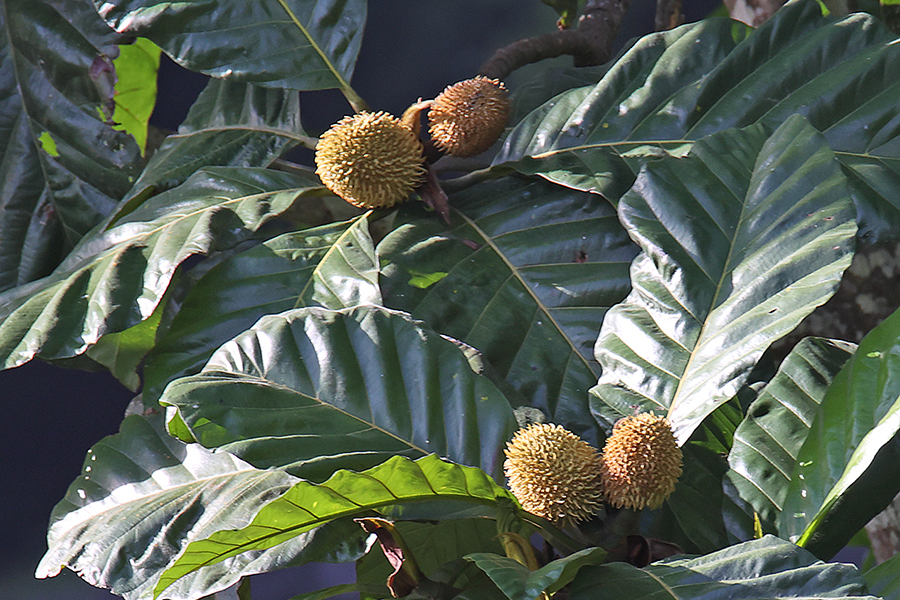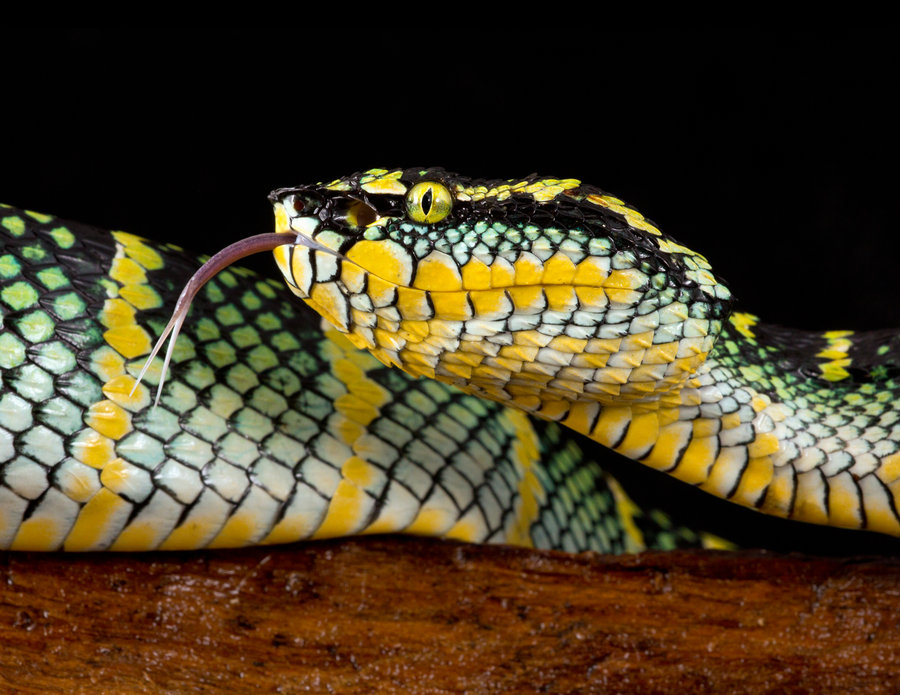DUSKY LANGURS (part one)
DUSKY LANGURS (Malaysia's monkey)
(part one)
INTRODUCTION
I have seen Dusky Langurs a number of times during the years I spent in Singapore and Malaysia. I marvelled at how cute they looked and was enchanted by the carrot-coloured babies. In late 2019 we changed location and rented an apartment at Diamond Villa in Tanjung Bungah on Penang Island. Not only were the views marvellous but there was a troop of Dusky Langurs in the adjacent forest. During the Covid-19 lockdown in 2020 photographing them became a project.
 |
| The first orange baby that was sighted in the forest next to our apartment |
DISTRIBUTION AND PHYSICAL DESCRIPTION
Dusky Langurs (Trachypithecus obscurus) are mostly located on Peninsular Malaysia with some spillover into Thailand and Myanmar. The species is also known as the Dusky Leaf Monkey, Spectacled Langur or Lutong. They have recently been designated as 'endangered' on the IUCN red list due to habitat loss and wildlife trafficking. They have lost 70% of habitat over 36 years to human activity, resulting in greater than 50% population decline. Widely hunted for food and the pet trade; the population continues to decline.
 |
| Dusky Langurs are mostly in Peninsular Malaysia plus some in Southern Thailand and Myanmar |
Locally Dusky Langurs are found in tropical rainforests with Dipterocarp trees as well as coastal forests, botanical gardens, national parks and urban areas.They mostly live in troops consisting of an alpha male, multiple females, juveniles and infants. On average there is any number between 6 and 20 in the troop. Both males and females disperse when they are between 3 and 4 years old. The alpha male rules the troop and only he mates with sexually mature females. Copulation is quick, taking 5 to 10 seconds. The alpha male is the father of all the babies in the troop and if he is displaced the new alpha male is likely to kill offspring of his predecessor. This type of violence is very uncharacteristic of the species.
 |
| Dusky Langur eating leaves, their main diet. |
The word 'langur' originated from a Hindu word meaning 'long-tailed. Their tail ranges in length from 50-85cm, longer than its body. The tails are not prehensile but are used for balancing when leaping or climbing trees. The head to body length in the male Dusky Langurs is 67cm (26.5 inches). The females are slightly smaller and lighter. The species has a unique appearance with its dark grey body fur with white-coloured fur patches surrounding its eyes and mouth. The adults also have buffy white hair crowns. They have a three chambered stomachs, opposable thumbs and like other Old World monkeys.......they have sitting pads. Their lifespan varies between 20-30 years, depending on their habitat.
The tail was used in the three images below for different purposes; (i) Used as an anchor while leaning forwards and (ii) To stabilise against a strong wind coming from the far side. The tail was curled in the direction of the wind. In the third image the tail is in different positions during the jump; up at the start and down when landing.
 |
| The white head fur in the mature adult |
 |
| The sitting pads on the derriere |
DIET
Dusky Langurs are diurnal and eat fruit, seeds, shoots and flowers.They have teeth adapted to their folivorous diet. They can consume up to 2kg of food every day while weighing only 5-9kg. Their stomachs are adapted to their cellulose-rich diet in that their stomach system has triple sacs where fermentation takes place with cellulose-degrading bacteria and other detoxification processes. Research on Penang Island in Malaysia shows that there are over 120 food plants the species feeds on. It is my observation that most of their intra-territory movement is directed to where there is ripe fruit. The consumption of multiple fruits makes them a major seed disperser in rainforests. Illustrated below are a variety of fruits and seeds that make up the diet in the Diamond Villa troop. These include; Sterculia parviflora, Angsana, Acacia auriculiformis, Syzygium grande (Jambu Air Laut) and Artocarpus elasaticus (Terap nasi)...just to name a few.
 |
| Artocarpus elasticus (Terap nasi).......there are many of these trees in the adjacent forest that fruit in June |
GETTING ABOUT
The troop members will spend 25% of their time feeding and about the same time moving from tree to tree. They spend nearly 50% of their time resting (and digesting). During this time there has to be quite a lot of gas emission. Resting usually occurs in the middle of the day when it is hottest. The young Langurs are light and streamlined but the older adults are rather rotund as they are essentially fermentation barrels, but are nevertheless very athletic. In their environment jumping is the quickest way to get anywhere. They have a brief look at the situation then launch themselves, sometimes in the best daredevil mode. They have great confidence in their abilities
Most of the Dusky Langur locomotion is hind-limb dominated but in trees all four limbs are used equally.They can climb trees effortlessly and have a great sense of balance.
SOCIALIZATION
Dusky Langurs will indulge in grooming and can be seen embracing and kissing. They will chase each other and play games and seem to be smiling on these occasions. They will have arguments amongst themselves but are generally a docile species that have evolved a face-to-face strategy for conflict resolution. Dusky Langurs possess a repertoire of vocalisations, postures and tactile behaviour which they use to communicate with each other. Vocalisations of males are typically more robust than that of female langurs, although the calls are similar.
Male sentries sit high in the treetops to keep watch for predators. They will emit a 'whoo' call to warn the troop members of potential danger, followed by a two-part honk call known as 'chengkong'. The call is so distinctive locals often call the species 'chengkongs'.
SHARING THE FOREST
In line with its non-aggressive nature Dusky Langurs co-exist peacefully with the other species they share the forest with; Long-tailed Macaques, Plantain Squirrels, Sunda Colugos, Black Giant Squirrels, Silvery Lutongs They have been observed to interbreed with this latter species on the mainland). There are no Silvery Lutongs or Colugos in the domain of the Diamond Villa troop. Langurs have been observed to be mutually grooming with Long-tailed Macaques. Several close contacts have been observed with Black Giant Squirrels as they often feed on the same trees. On one occasion the Langur seemed to deliberately corner the large squirrel who made a hasty exit. |
| Long-tailed Macaques |
 |
| Plantain Squirrel |
 |
| Black Giant Squirrel |
 |
| Black Giant Squirrel portrait |
 |
| Interaction between Dusky Langur and Black Giant Squirrel on an Acacia tree |
 |
| Long-tailed Macaque |
 |
| Silvery Lutong (Silvered Langur) |
 |
| Silvery Lutong/Dusky Langur hybrid (left) grooming a Dusky Langur |
The hybrid between and Dusky Langur and a Silvery Lutong has partial white eye surrounds, incomplete white around the mouth when compared with a Dusky Langur but it has the spiked crown of fur on the head which is typical of the Silvery Lutong.
There are interactions with various bird species, notably the Racket-tailed Drongos. This blackbird-sized bird with two long-trailing tail feathers is a forest insect feeder and a great mimic of ambient sounds. Forest birds are known to hunt singly or in multi-species waves where the cooperative movement across a wide front stirs up forest insects which is a benefit to all. When Dusky Langurs are moving the resultant disturbance of insects is also on a broad front. The drongos take full advantage of this and are often in very close proximity to the primates. Multiple drongos can be at 'the front' and often get very excited with their wide repertoire of calls. In return for this service the drongos warn the Langurs of the presence of predators. For the Langurs it is like having a personal surveillance drone.
Black-naped Orioles are also seen gathering near the moving Langur troop but the association is not as profound as with the Drongos.
 |
| Black-naped Oriole feeding |
As with any upside there is a downside. There are several potential predators the Langurs avoid or deal with. These include Snakes (Reticulated Pythons and Wagler's Pit Viper), Monitor Lizards and large Raptors (White-bellied Sea Eagle, Changeable Hawk Eagle and Crested Serpent Eagle.....all of which have been seen in the adjacent forest). By far the biggest threat is man, which will be addressed in part 2. All local eagles will take Plantain Squirrels, rats and snakes but I have yet to see them take smaller monkeys although they are capable of it.
 |
| Wagler's Pit Viper |
 |
| Reticulated Python |
 |
| Clouded Monitor Lizard |
 |
| White-bellied Sea Eagle |
Dusky Langurs will defend their territory against snakes and have been observed to shake or break branches when a python is in the vicinity. Likewise, with monitor lizards they show excitement and jump around the intruder to warn others.
 |
| The comparative size of a Black Giant Squirrel and an adult Dusky Langur |
SLEEPING
My observation and that of longer-term residents on the estate indicates that every three or four nights the langurs will move along the northern tree line around 6pm and spend the night in two adjacent trees near the road entrance of the estate. It can be assumed that there are 3-4 other sleeping trees in the territory of this troop.
 |
| Late in the evening a female settles in one of the sleeping trees to breast-feed her infant. |
 |
| Early activity at dawn in one of the sleeping trees overlooking the Strait of Malacca. |
End of part one





































Comments
Post a Comment